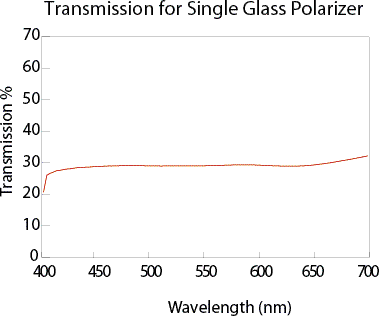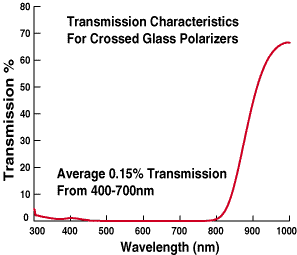
| Prix sur Quantité | |
|---|---|
| Qté 1-5 | €44,29 prix unitaire |
| Qté 6+ | €33,99 prix unitaire |
| Need More? | Demande de Devis |
Les Filtres Polarisants Linéaires en Verre présentent une efficacité de polarisation de 95% alors qu'un simple filtre fournit une transmission typique de 30%. Ces filtres ont une transmission croisée moyenne de 0,15% de 400 à 700 nm. Ces filtres polarisants en sandwich sont constitués d'un film polarisant dichroïque sur verre. Les Filtres Polarisants Linéaires en Verre sont parfaits pour les applications OEM, les prototypes et les projets en laboratoire. Ces filtres légers en plastique sont également disponibles montés.


Edmund Optics propose des services complets de fabrication personnalisée de composants optiques et d'imagerie adaptés aux exigences de vos applications spécifiques. Qu'il s'agisse de la phase de prototypage ou de la préparation d'une production à grande échelle, nous proposons des solutions flexibles pour répondre à vos besoins. Nos ingénieurs expérimentés sont là pour vous aider, de la conception à la réalisation.
Nos capacités comprennent :
En savoir plus sur nos capacités de fabrication sur mesure ou soumettre une demande ici.
ou consulter les numéros d’autres pays
facile à utiliser
entrer les numéros de stock pour commencer
Copyright 2023 | Edmund Optics, Ltd Unit 1, Opus Avenue, Nether Poppleton, York, YO26 6BL, UK
POLITIQUE DE CONFIDENTIALITÉ | POLITIQUE DE COOKIES | CONDITIONS GÉNÈRALES | CONDITIONS GÉNÈRALES B2C | MENTIONS LÉGALES | ACCESSIBILITÉ
L'entreprise Edmund Optics GmbH en Allemagne agit comme un mandataire d'Edmund Optics BV aux Pays-Bas.
Le titulaire du contrat est Edmund Optics BV aux Pays-Bas.
The FUTURE Depends On Optics®